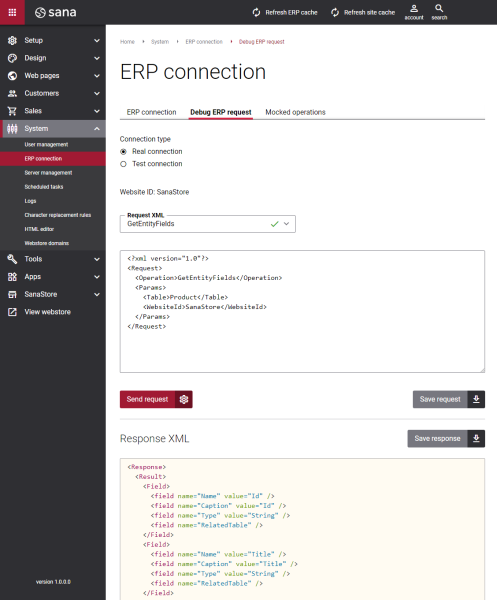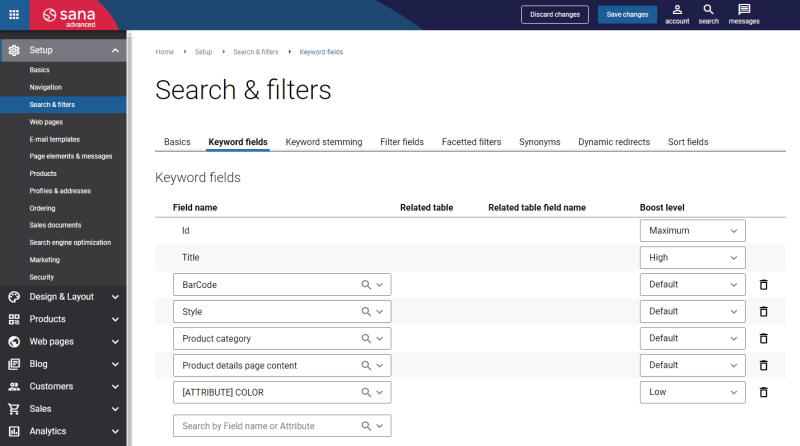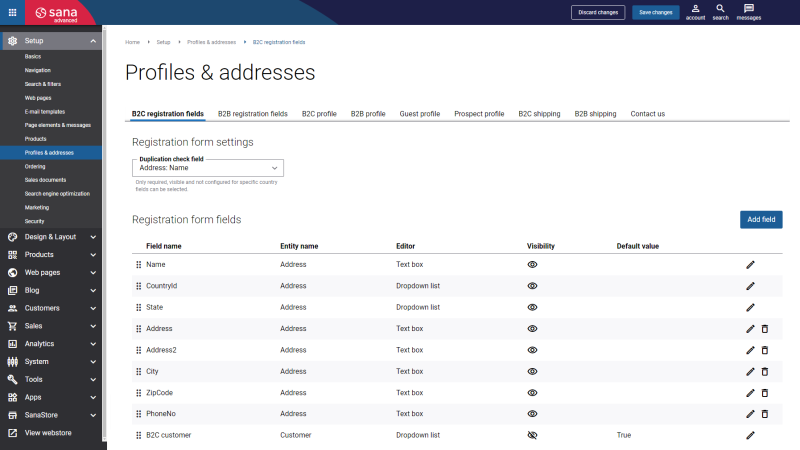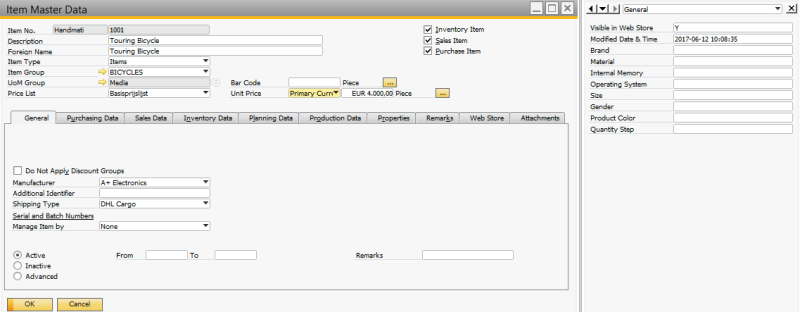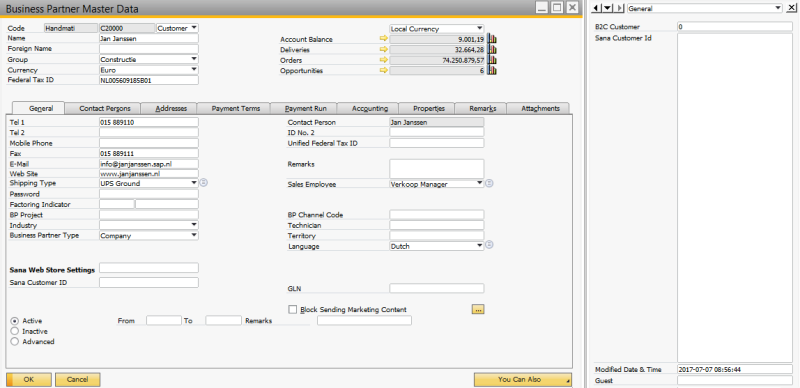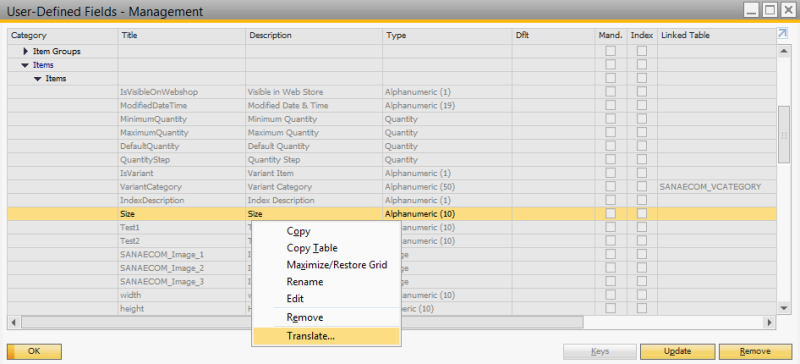User-Defined Fields
Sana Commerce Cloud is the ERP integrated e-commerce solution. This integration is unique in the sense that all information used in your web store comes directly and in real-time from a single place - your ERP system. As all master data is managed and stored in a single ERP database you can prevent data inconsistency and ensure that all your departments work with the same data.
There is the GetEntityFields Sana API method which retrieves all fields for a certain entity. This method takes as a parameter the name of the table in SAP Business One and returns the list of fields of this table. For example, if you request entity fields for the Product table (Item Master Data), all item fields and their values, like Item No., Description, Item Group, UoM Group, Price List, etc. will be returned from SAP Business One to Sana.
The purpose of the GetEntityFields method is to have the list of fields for a certain table in SAP Business One and to retrieve data from this table.
Sana Commerce Framework requests entity fields only for the product, customer, contact (prospect) and shipping address entities by passing the Product, Customer, Contact and ShippingAddress values as the parameters of the GetEntityFields method.
Item Master Data: Products
The entity fields of the products are used to retrieve item master data from SAP Business One, to show it in a Sana web store, configure catalog search, filtering and sorting, product specifications, and to create product sets.
Related Articles
Filter Fields
Keyword Fields
Webstore Search
Product Sets
Product Specifications
Business Partner Master Data: Customer Registration, Profiles, and Shipping Addresses
The entity fields of the customers, contacts (prospects) and shipping addresses are used to retrieve customer and contact data, and shipping addresses from SAP Business One, to allow customers to create sales orders in a Sana web store.
These fields are also used to set up the registration form for customers, profile forms for different types of customers (consumers, business customers, guests, and prospects), and shipping address fields for consumers and business customers.
Related Articles
B2C Customer Registration
B2B Customer Registration
Prospects
Customer and Prospect Profiles
Customer Shipping Address
User-Defined Fields
A part of the Sana Commerce solution is built on top of and installed inside SAP Business One. Therefore, we added our own user-defined fields to some standard SAP Business One tables. For example, you can see user-defined fields of the Sana Commerce add-on in the item and business partner master data.
-
The user-defined fields of the item master data can be also used to create catalog for a Sana web store, configure catalog search, filtering and sorting, product specifications, and to create product sets.
-
The user-defined fields of the business partner master data can be used to set up the registration form for customers, profile forms for different types of customers (consumers, business customers, guests, and prospects).
-
The user-defined fields of the business partner addresses can be used to add extra fields to the shipping address that customers can manually enter during checkout.
This extra data entered by customers in the user-defined fields during registration or in the shipping address in the Sana web store is saved to SAP Business One.
If you added your own user-defined fields to item and business partner master data in SAP Business One, they can be also used by Sana. The custom user-defined fields of the item and business partner master data are automatically retrieved by Sana and can be used in your web store.
If you add the custom user-defined fields to the item and business partner master data, and you want to use these fields in Sana, you must refresh the user-defined tables and fields, stored procedures. For more information how to refresh UDT / UDF / SD, see Web Store Parameters. If you are using the DI Server, you must also restart it. If you are using the Service Layer, you must restart either the Sana Commerce add-on or the SAP Business One client.
Translations
In SAP Business One the names of the user-defined fields of the item master data and their values can be translated to other languages. The item user-defined fields and their values can be shown in different languages in the Sana web store, for example in the product specifications. Sana supports translations only of the Item Master Data fields in SAP Business One on-premise but not cloud solution.
